AMD Ryzen 7000 vs. Intel Raptor Lake
AMD Ryzen 7000 and Intel's Raptor Lake are launching later this year, and the race is looking tight. Here's what we know so far.
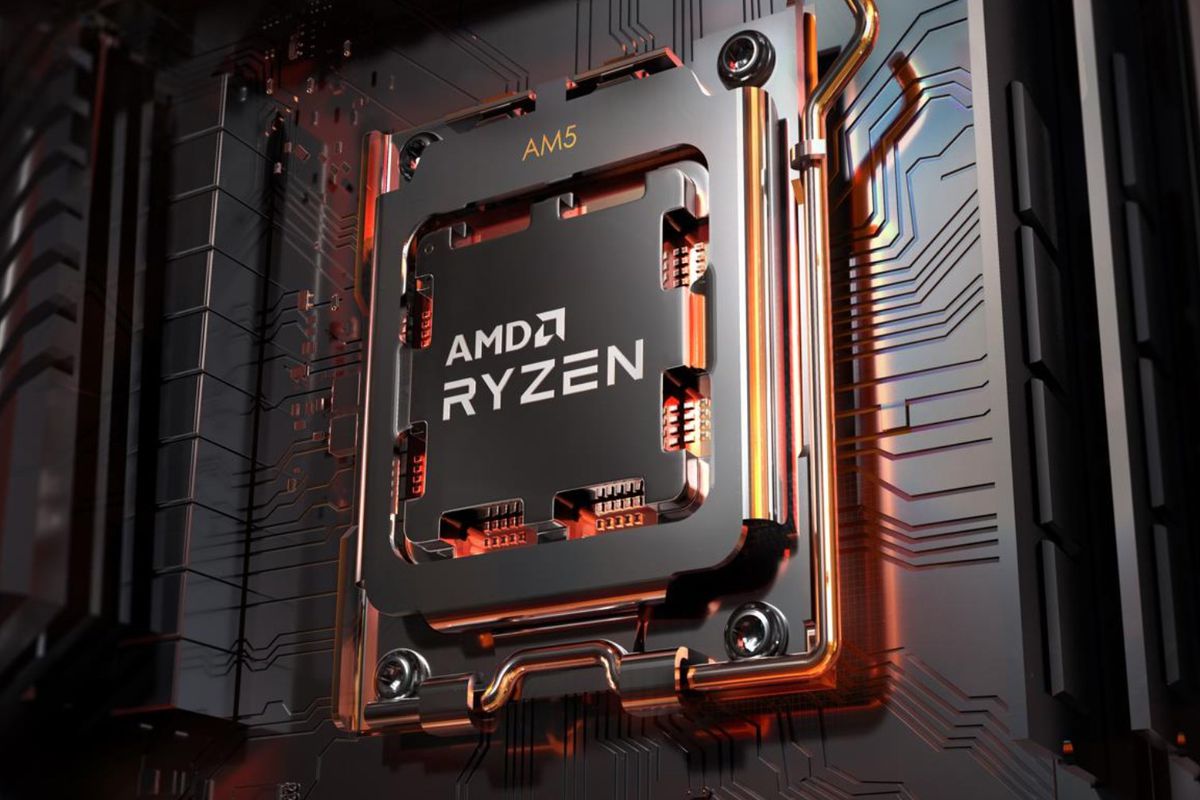
Later this year, both AMD and Intel are launching their Ryzen 7000 and Raptor Lake processors, respectively, at around the same time. AMD is aiming to take back the single- and multithreaded performance crown from Intel, while Intel is looking to solidify its lead and hang on to the gaming crown it took back with its 12th-generation processors. Yet each company’s approach could not be more different. Although AMD’s Ryzen 7000 CPUs are equipped with a new architecture and process node, they do not feature an increase in core count. Meanwhile, Intel is sticking with its 10nm process for its Raptor Lake CPUs and doesn’t seem to be pursuing major architectural changes; instead, it’s adding more cores.
Although reviews for the upcoming CPUs aren’t available yet, official information and (hopefully accurate) leaks give us a good idea of what to expect in the next generation.
Pricing and availability
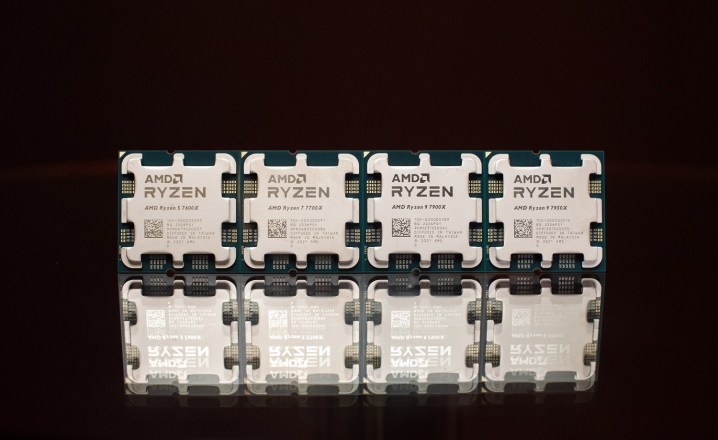
In August, AMD confirmed Ryzen 7000 would launch on September 27, which is also apparently the date for Raptor Lake’s reveal. According to the same rumor, Raptor Lake will then launch on October 20. Regardless of the rumor’s truthfulness (or lack thereof), Intel did confirm its CPUs would launch before December, so we won’t be waiting for very long.
AMD’s Ryzen 7000 reveal included pricing info for the four inaugural chips:
Ryzen 9 7950X, $699 Ryzen 9 7900X, $549 Ryzen 7 7700X, $399 Ryzen 7 7600X, $299Ryzen 7000’s pricing structure is something of an improvement over Ryzen 5000’s, but it still doesn’t offer anything for buyers wanting something a little cheaper. Ryzen 7000 CPUs with 3D V-Cache are also not available yet, but AMD has confirmed they’re on the way. Hopefully, we’ll hear something about cheaper or V-Cache-equipped Ryzen 7000 CPUs at AMD’s CES 2023 presentation in January.
 Jacob Roach / Digital Trends
Jacob Roach / Digital TrendsMeanwhile, Intel has not confirmed pricing for Raptor Lake, but for reference, here’s what happened with its 12th-gen CPUs.
Core i9-12900K, $599 Core i7-12700K, $419 Core i5-12600K, $299 Core i5-12400, $192 Core i3-12300, $143 Core i3-12100, $129Because Intel is increasing the core count rather than providing a significant architectural or process improvement, we would expect the top-end 24-core Raptor Lake CPU (presumably the Core i9-13900K) to carry a higher price than the Core i9-12900K. This is what happened with the Core i7-8700K and the Core i9-9900K — each CPU had more cores and a higher price tag than the old flagship. Meanwhile, we could expect the price per core to go down, which is what we have seen since 8th-gen.
Architectures
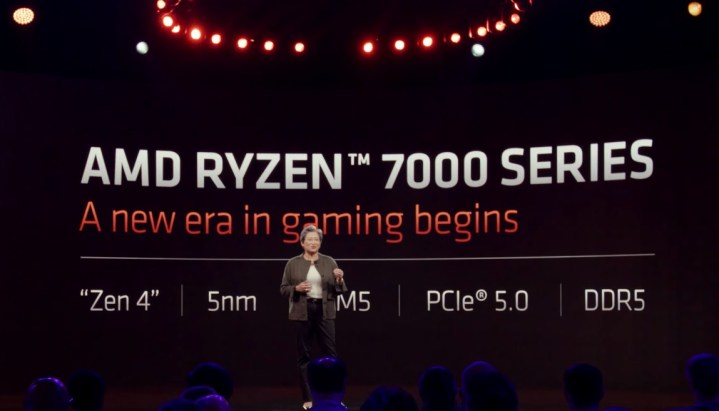 AMD
AMDAMD is introducing the new Zen 4 architecture with its Ryzen 7000 CPUs, and the big-ticket upgrades are 1MB of L2 cache per core (double from Zen 3), new AI instructions, and the use of TSMC’s new, enhanced 5nm node. Thanks to all those improvements plus several smaller changes, Ryzen 7000 promises a 13% boost in instructions per clock (or IPC) and a massive clock speed boost, from 4.9GHz on Ryzen 5000 to 5.7GHz on the top Zen 4 CPUs.
TSCM’s 5nm is particularly important because, compared to the older 7nm node, it offers up to either a 15% increase in clock speed for no additional power consumption or as much as a 30% reduction in power consumption at the same clock speed. Although these figures are often extremely optimistic, it certainly seems like Zen 4 is able to take full advantage of that potential boosted clock speed, as Ryzen 7000 is confirmed to run at 5.5GHz in moderately threaded applications like games, and potentially higher still when fewer cores are needed. However, Ryzen 7000 consumes much more power than Ryzen 5000 so that it can hit these frequencies.
Outside of the Zen 4 core itself, the IO die features an RDNA2 iGPU, bringing graphics to chiplet Ryzen CPUs for the first time. However, these graphics aren’t designed for gaming and are really aimed toward PC users that don’t want discrete graphics (like business PCs, for example) and also for use in high-end gaming laptops. Ryzen 7000 also supports DDR5 memory and PCIe 5.0 for both graphics and storage.
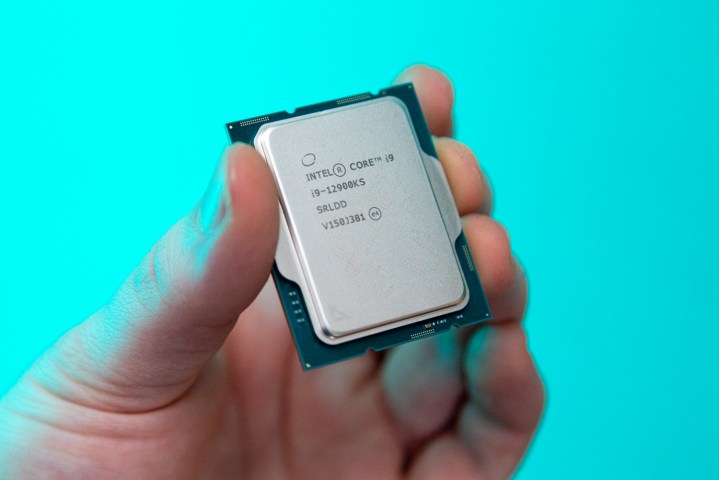 Jacob Roach / Digital Trends
Jacob Roach / Digital TrendsAs mentioned previously, Raptor Lake seems to be relying more on the addition of extra E-cores than improvements to the CPU cores themselves. The upcoming CPUs are not expected to feature a major architectural improvement over Alder Lake, and the process Raptor Lake uses is Intel’s 10nm, which is nothing new.
A leaked roadmap that dates to 2020 strongly hints Raptor Lake will not feature new efficiency cores, however, but an improved version of Alder Lake’s Golden Cove performance cores. Also on this roadmap is a reference to “improved CPU cache for gaming,” which could imply more L3 cache. Adding more L3 cache would certainly improve gaming performance, as seen in the Ryzen 7 5800X3D. We also might see more L2 cache, according to another leak that says Raptor Lake will have 2MB of L2 cache per performance core instead of the 1.25MB seen in Alder Lake.
Despite the lack of a new architecture or new process, Raptor Lake is expected to hit really high clock speeds. The Core i9-13900K, the new flagship, is rumored to have a boost clock speed of 5.8GHz, just above the Ryzen 7950X, and overclocking might even get these CPUs to 6GHz. However, the power requirements for the 13900K are also apparently much greater than those for the old Core i9-12900K, which is to be expected since Intel is still using its 10nm (or Intel 7) process.
Performance
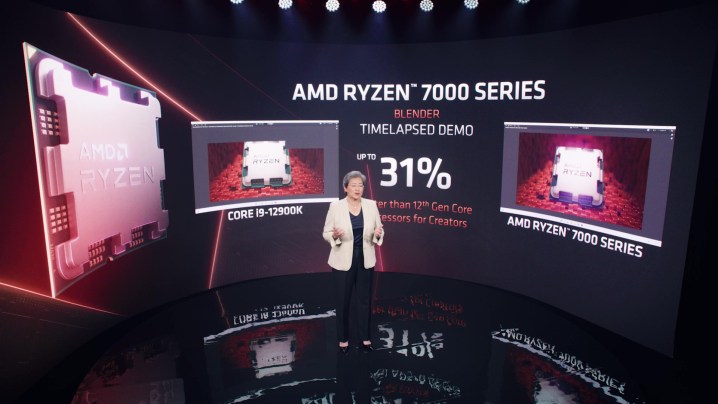
Until the chips are in the hands of independent reviewers, we won’t know for sure how fast they are, but AMD has at least given us some first-party numbers, and leaks and rumors give us a hint at what Raptor Lake might be capable of.
With the flagship Ryzen 9 7950X, AMD is promising a 29% increase in single-threaded performance and a 44% increase in multithreaded performance compared to the Ryzen 9 5950X. Against the Core i9-12900K, though, AMD is promising a ~10% gain in single-threaded performance and a 44% gain in multithreaded performance. These two claims look kind of weird next to each other when the 12900K is usually significantly faster than the 5950X in multithreaded, but that’s most likely down to the benchmark AMD used for measuring multithreaded performance.
But it’s really the 12900K comparison we’re interested in here, and AMD used Geekbench 5.4 for the single-threaded comparison. AMD says the 7950X gets ~2275 points in the benchmark, while the 12900K gets just ~2040. The 12900K’s score seems accurate enough, and we would like to believe AMD isn’t lying when it says the 7950X can get ~2275 points, which the company admits was achieved in a PC with 6000MHz DDR5 and a high-end AIO cooler (the same memory and AIO the 12900K was given).
AMD didn’t actually provide what benchmark it used for its multithreaded performance figure, but it’s almost certainly Blender. At Computex 2022 in May, AMD showed a demo of the 7950X and the 12900K running Blender, with the 7950X completing the render in 31% less time, making it 46% faster, which is very close to the 44% figure the company provided in August. AMD probably wants to use Blender as the basis of its multithreaded performance claims because the 5950X is actually just as fast as the 12900K in Blender, unlike many other applications.
As for gaming, AMD didn’t compare the 7950X to the 12900K, but it did say the 7600X was 11% faster than the 12900K, which implies the 7950X is also faster and then some. Ryzen 7000 features more L2 cache and higher clock speeds, so it’s not hard to believe that it could be faster than the 12900K. We’re not even talking about V-Cache, which is certain to improve Ryzen 7000’s gaming performance even further when those chips launch sometime next year.
Against the Core i9-12900K, AMD is claiming a victory in both single and multithreaded workloads, though the lead in single-threaded performance is quite slim. That leaves Intel in a bit of a rough spot, and there’s a good chance Raptor Lake might not beat AMD in single-threaded, multithreaded, or gaming performance.
The best Raptor Lake CPUs may have eight more E-cores than top Alder Lake chips, but that doesn’t necessarily mean big performance gains. AnandTech tested what it would be like if the Core i9-12900K didn’t have any E-cores at all, and the publication found that Alder Lake’s eight E-cores improve performance by anywhere from 5% to 25% depending on the kind of work. That’s not a ton of extra performance, especially at the lower end, and it only helps for multithreaded workloads.
Assuming perfect scaling, the 13900K might get another 5% to 25% more multithreaded performance from those E-cores. We can also give the 13900K an extra ~10% more single and multithreaded performance thanks to higher clock speeds. That might mean the 13900K could have between ~15% to ~40% higher multithreaded and ~10% higher single-threaded performance than the 12900K. To Intel’s credit, this doesn’t factor in cache, but it’s also important to note that extra cache sometimes has no significant impact on performance, especially outside of games.
Before we declare Raptor Lake dead on arrival, though, let’s keep in mind that the reviews aren’t in yet and that Intel hasn’t even revealed Raptor Lake. Maybe Raptor Lake has some secret sauce that allows the extra E-cores to be really fast, and maybe those improved P-cores will provide the small amount of extra IPC that Intel would need to keep the performance crown. That extra cache will be useful for gaming, at least. Intel certainly isn’t the favorite to win in this matchup, but we can’t count Raptor Lake out yet.
Motherboards
 AMD
AMDAMD has announced three new chipsets to launch alongside Ryzen 7000: X670E, X670, and B650. The X670E chipset is for hardcore overclockers, X670 is for the typical high-end user, and B650 is for lower-end to midrange users. AMD hasn’t yet announced a successor to the A520 chipset, but A520 was a late addition to the 500 series, so that may come post-Ryzen 7000 release. For simplicity’s sake, since Intel’s current-generation boards are also the 600 series, we’re going to use socket names, so AM5 for AMD and LGA1700 for Intel.
All AM5 motherboards support DDR5, PCIe 5.0, up to 14 USB ports each at 20Gbps, Wi-Fi 6E, and Bluetooth 5.2. The maximum number of displays from the motherboard is also increased, from two on the 500 series to four on AM5. Overclocking support has not changed, and AM5 owners will be able to overclock on B650, X670, and X670E motherboards. AM5 motherboards are also compatible with AM4 coolers, which is great for any AMD user wanting to upgrade when Ryzen 7000 launches.
AMD is also introducing its EXPO memory overclocking feature, which is basically a fancy version of XMP. Unlike XMP, however, not all DDR5 kits will have support for EXPO, which is more of a feature for enthusiasts and overclockers than a new standard.
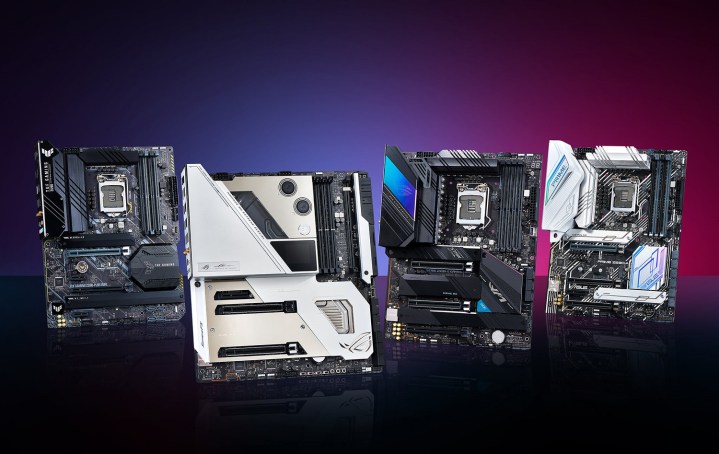
Although Intel hasn’t announced new motherboards for Raptor Lake, it has said Raptor Lake is “socket-compatible” with Alder Lake boards, so we can assume current LGA1700 boards will receive BIOS updates that enable them to use Raptor Lake CPUs. Intel’s LGA 1700 motherboards, much like AMD’s AM5 motherboards, support DDR5 (and DDR4, unlike AM5), PCIe 5.0, Wi-Fi 6E, and Bluetooth 5.2. On a feature level, neither AMD nor Intel has a particularly large advantage.
One point for Intel is that all of its chipsets and motherboards support PCIe 5.0 on the x16 slot for graphics. Even the lowest-end LGA1700 board can support a next-generation PCIe 5.0 GPU. Meanwhile, PCIe 5.0 graphics on AMD’s AM5 motherboards is exclusive to higher-end models.
AMD does have better support for PCIe 5.0 solid-state drives (SSDs), however. All the AM5 chipsets that AMD has announced so far support at least one PCIe 5.0 NVMe SSD, whereas no current Intel motherboards support PCIe 5.0 SSDs. Intel could launch new motherboards that support PCIe 5.0 SSDs with its Raptor Lake chips, however, so we’ll have to wait and see what happens there.
Intel’s LGA1700 motherboards support DDR4, though, which means Alder Lake (and presumably Raptor Lake) users don’t have to buy expensive DDR5 memory if they choose not to. Meanwhile, AMD’s AM5 motherboards don’t support DDR4, so users will have to buy DDR5 RAM.
Generally, both AMD’s and Intel’s 600 boards offer similar features. Intel does have an advantage over AMD in that you can already buy Raptor Lake-compatible boards, but that’s only relevant to people who already have an Alder Lake CPU or are planning to buy one in the near future.
Ryzen 7000 might win by the skin of its teeth
Now that AMD has revealed Ryzen 7000 with big performance claims, it’s looking more and more like Ryzen 7000 might get a small victory not just in multithreaded performance but also single-threaded and even gaming performance. AMD will definitely like being back in the lead, but it won’t be enjoying the kind of multithreaded advantage it had with Ryzen 3000 and 5000. As for Intel, even if Raptor Lake loses all across the board, it’s hard to imagine it being very far behind, so as long as these CPUs are priced competitively, it’s unlikely this generation will be one-sided.

 ShanonG
ShanonG 






























